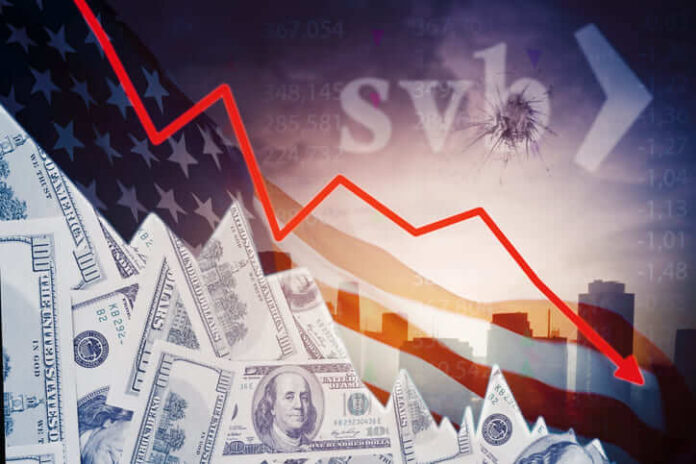One of the most shocking stories in the news lately is the collapse of Silicon Valley Bank. The fall marked the largest United States bank failure since Washington Mutual in 2008.
The bank recently first announced it sold off a huge number of securities and made a significant loss from the sales and said it was planning to raise $2.29 billion through the sales of new shares to cushion the loss and balance up the sheet.
This causes panic among venture capital firms, causing them to have a run on the bank. Silicon Valley Bank’s stock went down by up to 60% in just a single day which prompted regulators to step in and shut the bank down.
Many things have happened since the collapse and will like to use this post to help you see some more things about the incident, including the likely causes of SVB’s collapse.
Silicon Valley Bank’s Fall from Stardom
Silicon Valley Bank (SVB) was founded in 1983 and quickly became a leader in providing banking services to technology and innovation industries. Located in Santa Clara, California, SVB became known as the “Bank for Innovators” and played an important role in supporting the growth of the thriving Silicon Valley technology industry.
Over the years, Silicon Valley Bank has expanded its services beyond banking to include venture capital, investment management, and other financial services. It has also expanded its activities beyond Silicon Valley to other innovation centers across the U.S. and around the world.
Possible Causes of the Bankruptcy
Increased competition
Despite its success, Silicon Valley Bank faced growing problems in recent years that eventually led to its bankruptcy. One major factor was increased competition from traditional banks and fintech startups, which began offering similar services in SVB’s niche market.
Tech could be the culprit
Another factor was the bank’s excessive dependence on the technology industry, making it vulnerable to boom-bust cycles in the sector. As the growth of the technology industry slowed, SVB’s loan portfolio began to suffer, and its earnings declined.
Regulations and expansion
Silicon Valley Bank has also faced severe regulatory inspections over the years, resulting in fines and legal costs that have further damaged its financial health. In addition, the bank’s expansion into new markets and business lines has depleted its resources and made it difficult to maintain profitability.
In the end, SVB could not cope with these problems and filed for bankruptcy in 2022. This news shook Silicon Valley and the technology industry, with many industry leaders expressing their disappointment and sadness at the bank’s collapse.
The bankruptcy of SVB serves as a useful example for other banks and financial institutions specializing in niche markets. It highlights the importance of diversification and the need to adapt to changing market conditions in order to remain competitive and sustainable.
The Fall Will Deepen the Tech Winter
The fall of Silicon Valley Bank marks the end of an era for the tech industry and a significant loss for the innovation ecosystem. While this is a sad and unfortunate outcome, it provides an opportunity for the industry to think about the importance of resilience and adaptability in the face of adversity.
SVB’s bankruptcy is a stark reminder that no company, no matter how successful or established, is immune to market disruption and unforeseen events. It also highlights the importance of effective risk management practices and a culture of innovation and flexibility.
However, it is important to note that the bankruptcy of SVB does not diminish the bank’s many achievements and contributions to the technology industry. The bank has played a crucial role in supporting countless start-ups and entrepreneurs by providing them with the financial resources needed to turn their ideas into reality.
What Happens When a Bank Collapses?
Perhaps you are also asking yourself what happens next after a bank is declared bankrupt. When a bank collapses or goes bankrupt, it means that the bank is unable to meet its financial obligations and cannot pay its debts.
The consequences of a bank collapse can be significant, both for the bank itself and for the broader economy. Here are some of the things that can happen:
- Assets of the bank may be sold off: In a case where a bank goes bankrupt, its assets may be sold off to individuals or other banks. This can include investments, loans, and other financial products.
- Depositors may lose their money: If a bank cannot pay its depositors, they may lose some or all of their money. However, in many countries, deposit insurance schemes exist to protect depositors up to a certain amount.
- Credit markets may freeze up: A bank collapse can create a ripple effect in the broader financial system, leading to a freeze-up of credit markets. This can make it difficult for businesses and individuals to borrow money and can have a negative impact on the economy.
- The government may intervene: In some cases, the government may intervene to prevent a bank collapse, particularly if the bank is considered “too big to fail.” This can involve providing financial assistance to the bank or taking over its operations. This is likely what is going to happen to SVB, and discussion about this is already on the way.
















